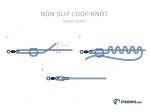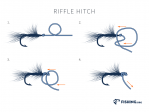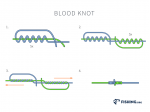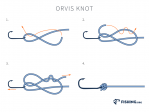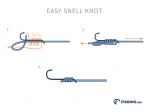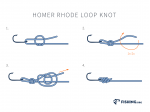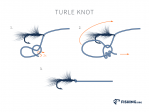Sport climbers, who take multiple lead falls, often use The Double Bowline Knot as a tie-in knot because it is easier to untie after a weighted fall than a figure eight knot. However, this knot is not as secure as the figure eight knot for climbers. The knot can have a tendency to slip, so it is best coupled with a stopper knot.
The Double Bowline Knot was first named by Clifford Warren Ashley. The knot goes by several different names including the Double bowline, the Round Turn Bowline, and Double-Knotted Bowline. Other related knots are the Bowline, the Water bowline, the Double sheet bend, and the Bowline on a bight.
Clifford Warren Ashley (December 18, 1881 – September 18, 1947) was born in New Bedford, Massachusetts. He became a sailor and knot expert as well as an author and American artist. In 1944 he published The Ashley Book of Knots, a reference manual that listed thousands of illustrated knots with directions for tying. It is a reference book that is still used today for knot tying.
Double Bowline Knot

Double Bowline Knot
Tying the Double Bowline Knot:
Step 1:
With the free end of the rope hanging down, create a small loop or half hitch in the rope in the palm your left hand.
Step 2:
Next, create another small loop/half hitch resting below the first loop.
Step 3:
Take the free end of the rope, going on the underside of the loops, thread it through both loops.
Step 4:
Then, supporting the standing line, wrap the rope around the standing line and rethread back through the two loops.
Step 5:
Grip the standing line and pull on the free end to tighten the knot.
Step 6:
Add a safety knot, such as an Overhand or Stevedore knot, to prevent slipping above the double bowline.
Our Take:
This versatile knot can be used for heavy rigging when an easy release is needed.
 Joshua Keaton
Joshua Keaton 

